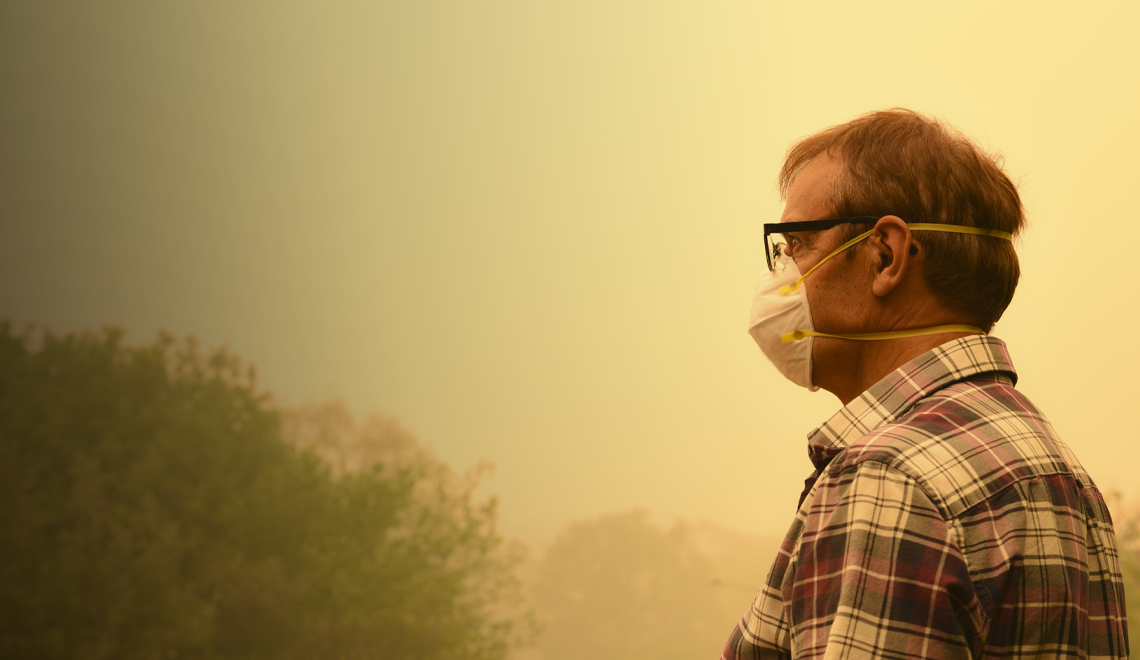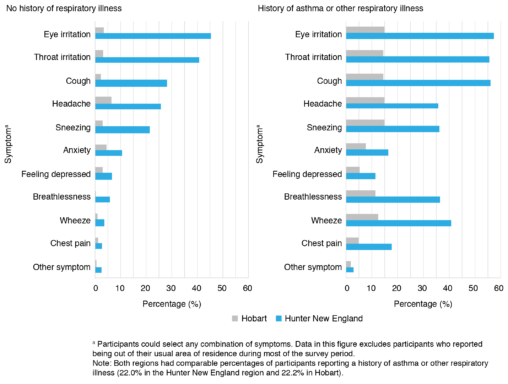
Over 65% of people in a smoke-affected area of NSW experienced health symptoms during the recent bushfires, according to a new paper published in the Sax Institute’s PHRP health journal.
The Australian study is the first of its kind to gauge the effects of bushfire smoke that often go unreported because they don’t involve emergency presentations.
“Many of the expected symptoms of bushfire smoke are mild, such as coughing, irritated eyes and throat,” explains lead author Dr Zachary Howard, a postdoctoral researcher with NSW Health. “Most people probably don’t see a doctor for those symptoms, but that doesn’t mean these experiences didn’t happen.”
To quantify the impact of bushfire smoke on communities, Dr Howard and his team used the online health surveillance system Flutracking to survey 1,200 people in NSW’s Hunter New England region, which was severely impacted by bushfire smoke in late 2019, comparing them with a control group in Hobart, which was unaffected.
Flutracking is normally used for reporting on flu symptoms. However, researchers used the platform to email a one-off survey to participants, rapidly assessing the health impacts of local bushfire smoke in real time.
Residents in the Hunter New England regions fared much worse, with 65.1% of participants experiencing at least one symptom related to bushfire smoke, such as eye or throat irritation, cough, headaches or sneezing.
A staggering 83% of residents with asthma or other respiratory illnesses reported even more severe symptoms like shortness of breath and chest pain.
Critically, most of these people did not seek advice from a medical practitioner, suggesting the true health impact of bushfires could be severely underestimated.
Percentage of participants reporting each symptom surveyed, by location and history of respiratory illness:

Dr Howard says this study not only demonstrates the usefulness of Flutracking as a rapid assessment tool in public health emergencies – it also reveals the need for public health messaging about managing smoke-related symptoms during bushfire season.
“With this knowledge, future public health messaging can be targeted to ensure people at risk can take appropriate action, such as staying indoors when possible.”
Public Health Research & Practice is an Australian health journal that is committed to publishing innovative, high-quality papers that inform public health policy and practice.
Access the full paper here
Find out more about Public Health Research & Practice here
